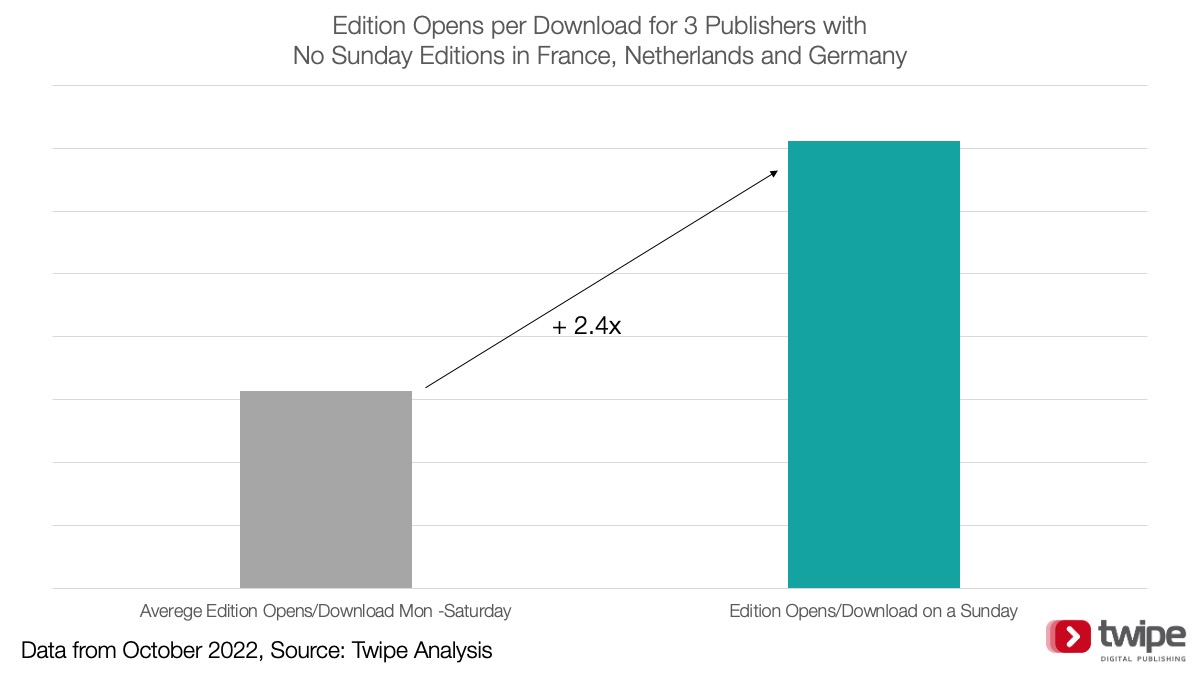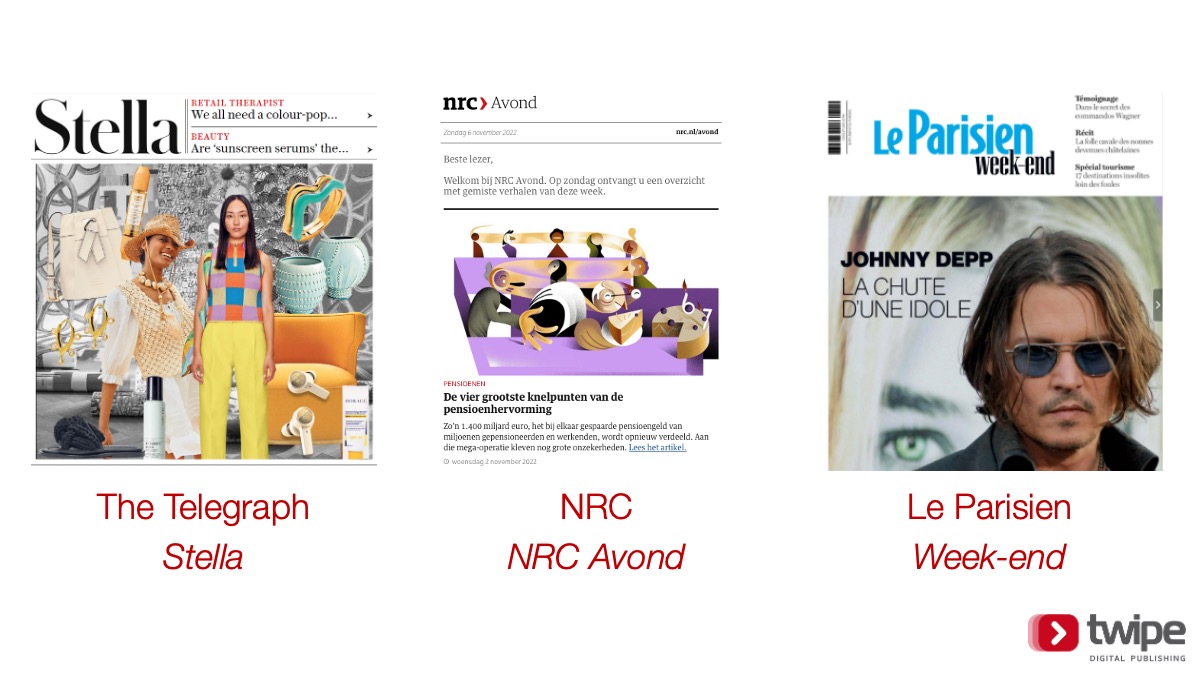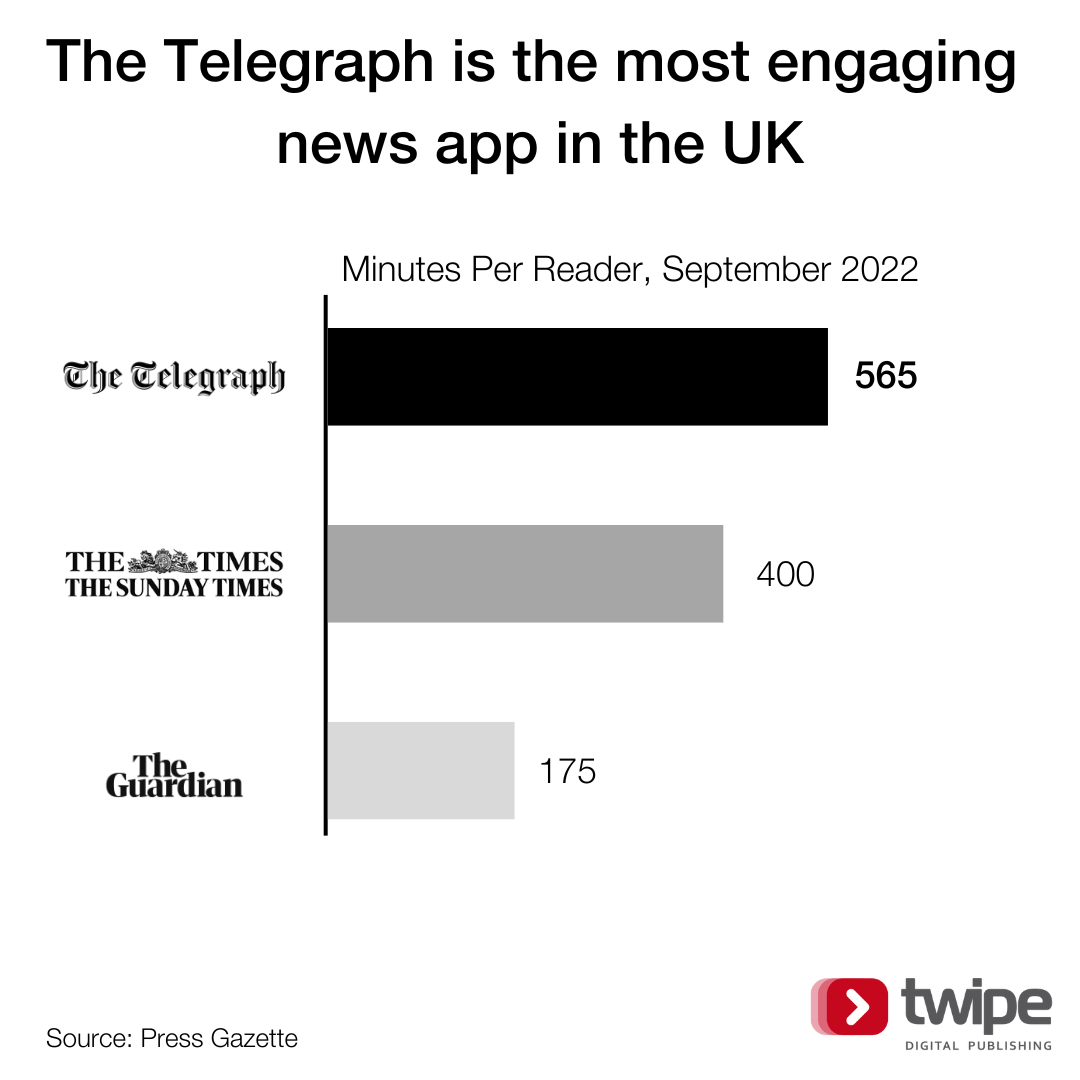How Sunday editions help increase digital engagement
Sunday editions get special attention from many publishers. They offer in-depth analysis, enriched offerings, more light-hearted stories and opinion of the week’s news events. Journalists can also dive deeper into issues and provide updates on the big stories of the the week. According to a 2016 study, readers in the UK spent 80 minutes reading the Sunday edition in print, more than any other day of the week and these habits appear to be present in digital.
15% higher edition reading on Sundays than the week average
A growing number of publishers have cut their Sunday print offerings to save costs, but Sunday editions continue to play an important role in the digital world.
We studied the Sunday reading habits of 10 publishers using the Twipe Edition distribution platform and we see that Sunday edition reading is 15% higher than the average edition reading from Monday – Saturday, for publishers who do offer a Sunday edition.

Engagement time with the Sunday edition is also greater than during the week. Using EngageReaders data for a publisher with Sunday editions, we looked at the average consumption time spent on Sundays vs weekdays. Edition reading times are always impressive when compared to website reading, most often ranging at 20-25 minutes when studies across all publishers on our platform.
On Sundays, we saw the averages go up to 39 minutes, 53% higher than the weekday edition. Of course this will be due to the larger publications sizes on Sunday editions, but clearly subscribers are willing to invest the time.

Sunday Editions as a bridge from print to digital
In January of this year, The Telegraph stopped printing their “Stella” magazine provided as part of their Sunday supplements. The lifestyle and fashion magazine makes up a significant part of The Sunday Telegraph’s offering including a weekly news review long read so readers can catchup with news they may have missed, a revamped puzzles section advertised as the UK’s biggest weekly puzzle section and other lighter content like a Travel writing magazine. This light-hearted content was originally designed to bring in a different audience and diversify The Telegraph’s reach.
The magazine continues to be offered in digital via the Telegraph Unified App contributing to the high app engagement recently reported by Press Gazette of almost 10 hours of reading time per month.
Le Parisien also publish a Sunday edition which is the same for all regions. Readers are given a national overview of the news, as well as access to more extensive stories and leisure content in their “Le Parisien Week-end” magazine. Whilst these are available in both print and digital they help to diversify the content on offer to readers.
This variety of content on offer acts as a tool to provide readers with the chance to have a break from hard news and let them escape. The content still appears to be popular in the digital realm and could be a powerful tool to leverage.
Sunday consumption lower for non-Sunday edition publishers
For those who don’t publish on a Sunday, it represents a day of lower consumption. Average edition reading is down 23% on a Sunday compared to the rest of the week on any publication. But this doesn’t necessarily mean that people don’t want to read on a Sunday.
When studying the number of edition opens per download for a set of 3 publishers who do not offer Sunday editions, we see that readers opening different editions on a Sunday show 2.4x more edition opens per download than during the week.

This can suggest that readers may use their time to open previous editions or supplements from the week since there is no Sunday publication available.
At one regional publisher, we saw a trend of users going through other region’s editions on a Sunday to catch-up on local news from elsewhere. The ability to do this is also a feature unique for digital offerings, with users easily being able to change between regions and dive into archives in news kiosks and apps. Could this be a missed opportunity for publishers?
How can publishers leverage the Sunday demand?
Although Sunday consumption is lower for these publishers, it remains important to please all subscribers. In the face of increasing competition, publishers must work to become a partner in life for their customers and this may present them with the chance to foster new and stronger relationships with subscribers. Could a purely focused digital offering fill this gap in a convenient and cost friendly way? The Telegraph‘s Stella and Le Parisien‘s Week-end supplements are part of separate newsroom efforts and could provide inspiration for publishers.

Other publishers have turned to newsletters to capitalise on this trend and guide readers through the previous week’s content. Dutch publisher NRC experiments with offering a personalised newsletter with this retrospective of the week using JAMES recommendations. The NRC Avond newsletter includes a Sunday evening edition of their newsletter to offer readers an overview of stories they may have missed from the previous week.
The New York Times recently started paying more attention to Sunday readers. In July 2022, the publisher announced a rebranding of their 11-year old “Sunday Review” section. The section, now called “Sunday Opinion“, promises to “find more diverse voices, perspectives from nationwide focus groups and longer pieces of personal writing”.
No matter what your offering, there is clearly a Sunday demand for reading. Reach out to learn how your readers are reading on Sunday and to explore how you can start a digital Sunday edition
Other Blog Posts

Stay on top of the game
Join our community of industry leaders. Get insights, best practices, case studies, and access to our events.
"(Required)" indicates required fields

